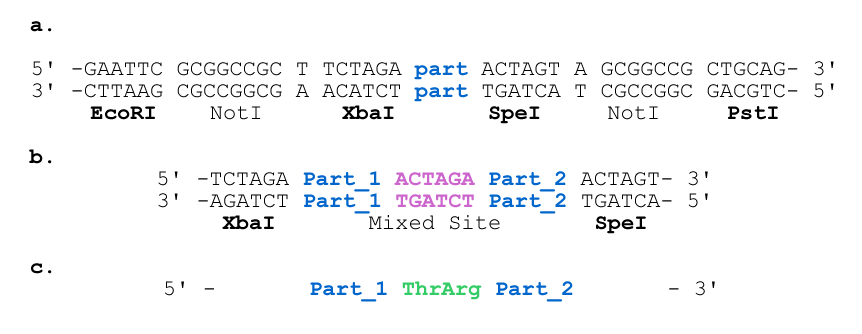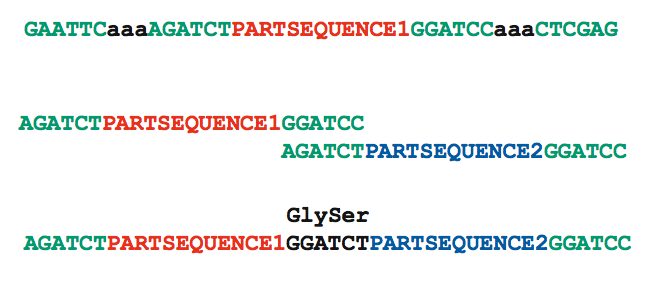User:Meagan/Assembly standards
From 2008.igem.org
People in community have developed various cloning techniques/assembly standards. iGEM supports three so far. (But there are a lot more being worked on)
Why would you want to use standard biological parts and an assembly standard?
- easier than traditional cloning techniques
- more reliable
- less time consuming
- each resulting part fits the same assembly scheme as was used to create it
- can separate function from assembly
- robotic assembly
BioBrick™ Assembly (TKnight)
BioBrick™ assembly is the original assembly standard created by Tom Knight. It was first described in his paper on [http://hdl.handle.net/1721.1/21168 Idempotent Vector Design for Standard Assembly of Biobricks™]. Since publication of that paper, this assembly standard has been adopted by Tom Knights lab the Registry of standard Biological Parts, iGEM, and many labs in the synthetic biology (based on standard biological parts) community.
Supported plasmids:
- [http://partsregistry.org/cgi/parts/partsdb/pgroup.cgi?pgroup=Plasmid pSBxxx series], e.g.:
- pSB1AC3
Restriction enzyme scheme:
- EcoRI (Prefix)
- XbaI (Prefix)
- SpeI (Suffix)
- PstI (Suffix)
Various methods:
- standard assembly
- 3-antibiotic assembly
FusionBricks (Silver Lab)
Developed by Pam Silver, Ira Phillips, and the rest of the Silver lab at Harvard. They found that the original BioBrick™ scheme was not compatible when considering proteins. The scar that is created by the BioBrick™ assembly method creates a frame shift when translating to a protein.
The FusionBricks method allows the frame to be maintained across the scar by adding a different number of spacer nucleotides on either side of the part sequence.
Other features/requirements of using FusionBricks:
- XbaI and SpeI restriction sites are directly next to the part
- Parts must not begin with a T or a C nucleotide
- BioBrick™ parts can be combined with FusionBrick parts
Supported plasmids:
- same as the BioBrick™ supported plasmids (see above)
BioBricksExtreme Assembly (JCAnderson)
The BioBricksExtreme assembly standard was developed by Chris Anderson at UC-Berkeley. Like the FusionBricks design, BioBricksExtreme is also optimized for protein fusion. This method uses different restriction enzymes than the other two assembly standards - EcoRI, BamHI, BglII, and XhoI.
The ligation of two parts with this method creates a scar that when translated results in a Glycine-Serine pattern.
 "
"

